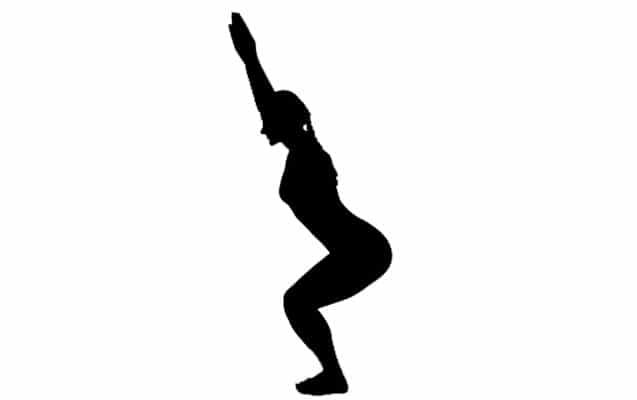“What am I supposed to be feeling?”
This is a common question in yoga classes.
What am I supposed to be feeling in this pose? In my body? What is it supposed to feel like?
What “should” it be like, feel like?
And quite honestly, the best answer I feel any teacher can give you is, “I don’t know. It’s your experience.” But you’re likely gonna feel that’s a cop out, so let’s explore this.
Yoga is a system of connecting with body, breath and mind and observing what gets revealed.
There can be many levels of what’s possible to feel.
Maybe the better way to approach this is: What’s possible to feel in this pose? What’s possible to feel in my body? What’s possible to feel in my heart and thoughts?
The experience of yoga is unlike any fitness class that tells you to do something until you feel the burn and to push past your pain or your desire to stop. Because, well, yoga isn’t a fitness class.
Yoga awakens us to experience and perception and awareness and truth. Yep, all that.
So each posture (or breath or other limb of yoga) gives us an opportunity to explore what’s possible to perceive while in those spaces? And what are we learning in that perception?
Within that framework, let’s explore:
What’s possible to feel in this pose?
Let’s say we’re in Warrior 2. This is a standing posture that can be intense on the legs and hips.

What’s possible to feel? We can feel tension and heat and strain in our legs. We could feel tight stretching in the inner thigh of the back leg. The arms, if lengthened out, could feel heavy and the shoulders could feel strain and burn.
It’s very possible to feel miserable in this posture.
We could feel like a lot of fight and strain builds up. We could feel angry at muscles that are fatiguing or angry at the teacher for a perceived impossible amount of time in the pose.
And now we can also embrace other possibilities.
It’s possible to practice forgiveness and moderation to find ease in the pose.
We can notice the struggle and make it possible to change it.
Where we get in trouble is forcing our bodies and our minds in spaces that are intolerable, torturous and harmful because of a perceived “should” or optimum expression of the pose.
Yoga will teach us to listen honestly and adjust or it won’t and you’ll quit.
What’s possible to feel in my body?
Maybe the legs have dominated so much of our attention we’re not even aware of our feet. Maybe we can’t feel the feet at all, or the torso or the neck.
Is it possible after giving yourself some adjustments (that might make it a less deep expression of the posture but more comfortable) to start to do a body scan?
Dear feet, are you down there?
Is it possible to feel our belly and enjoy feeling it expand and contract as we breathe?
Maybe that’s possible in your Warrior 2.
What’s possible to feel in my heart and thoughts?
This is the final frontier of the yoga experience. We explore strange new worlds and boldly go where we haven’t gone before… how we feel and think and how we can affect it.
We’ve got to get into the body first and then notice the chatter in the mind and how it affects our feelings.
If you think you’re “supposed” to feel peaceful and love for all mankind in your yoga you’ll be sadly mistaken when your pissed off voice interjects.
What’s possible is usually what we’ve known and done all the time… that inside voice we carried onto our mat is the same one that’s with us day in and day out, just like the body is the same one we walk around in every day.
What’s possible to feel in our heart and thoughts in our Warrior 2? It’s possible to notice our thoughts and ask ourselves if it’s true.
This is impossible. Is it true? If so, make it easier. If it’s not, what can we notice and learn in it?
This hurts. Is it true? Can I choose to not hurt? What would that look like?
I’m never going to be good at this. Is it true? Probably not. And being good at it means what exactly?
This makes me feel free and open. Is it true? What did we do in this posture to feel that way? What did we do in our minds to invite that feeling?
What we get opportunities to observe varies from posture to posture. The heat-generating postures feel like more fertile ground for the “shoulds.” But it’s the restorative and more still spaces that often confound the new yogi in the “should” department.
A reclining twist. A reclined bound angle. Countless times students call me over and ask, am I doing this right? What should I be feeling here? They wrestle and wrench themselves as though they are seeking an intensity that’s evading them and if they’re not in the intensity they’re not “doing it right.”
It’s as though feeling ease can’t be the right answer.
Savasana, corpse pose, is the mother of all mothers in that regard.
All the “supposed tos” and “shoulds” get put to the test and confronted and maybe they submit.
We get a chance to notice the non-stillness in our bodies as they fight to just lie there.
We are offered an opportunity to observe our breath and our minds.
We get to inquire of ourselves the amount of ease we need.
Then, will we take it? Can the stillness be enough? Can the non-doing be enough? Is ease and non-struggle OK?
May this serve you on your journey on and off your mat when you notice that “should” and “supposed to” question popping up.
Instead, allow yourself to ask what’s possible.


